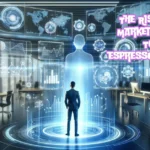Contents
Understanding the Power of Live Shopping
In the past few years, live shopping has emerged from its nascent stage to become an established platform where fluid interaction and instant purchasing converge. Using sophisticated live shopping software, retailers create real-time shopping experiences that captivate global audiences. The key to its success lies mainly in its ability to combine entertainment with immediate commercial action. This dynamic approach appeals to modern consumers who value experiences and instant gratification. The success of live shopping is also anchored in tapping into innate human behaviors, such as the natural tendency to act quickly in response to time-sensitive offers and the psychological need for social inclusion, which can be triggered by seeing others participate in the shopping event.
Live shopping’s efficacy also stems from its ability to bring a sensory richness to online shopping, simulating an in-store experience many shoppers miss. When viewers see products in use, rather than static images on a screen, it creates a more immersive experience, often leading to a stronger desire to purchase.
Maximizing Engagement with Live Streaming
The heart of a successful live shopping experience is a high degree of viewer engagement. Creating an engaging livestream requires finding the formula that resonates with your audience. It’s not just about showcasing products but creating a narrative around them that aligns with your brand’s image and values. Key to this narrative is a host who can authentically represent the brand and connect with the audience on a personal level. Using interactive elements such as real-time Q&As, live polls, and giveaways within the stream can significantly enhance viewer participation, drawing them into a conversation rather than leaving them as passive onlookers.
Examining case studies of successful live-streaming campaigns, like those executed by major fashion houses or tech firms, reveals a pattern of meticulous planning and a deep understanding of the target audience. Tailoring the event’s format, style, and content to suit viewers’ preferences is essential. Knowing when your audience is most likely to tune in, which social media platforms they frequent, and what style of presentation will hold their attention are fundamental considerations. Successfully engaging the audience in a live-streaming event means anticipating their needs and interests and delivering entertaining and informative content.
Converting Interest into Sales
With an engaged audience, the crucial next step is to convert their attention into tangible sales. The conversion process in a live shopping event revolves around timing and the calls-to-action (CTAs) effectiveness. Presenters must employ persuasive language encouraging viewers to leap from “I like this” to “I need this.” Seamless integration of sales processes is also critical; any hiccups during checkout can quickly deter a potential sale. Many leading livestream platforms now offer features that enable viewers to make purchases without leaving the stream, reducing the risk of losing sales to distractions or second thoughts.
Presenters, especially influencers with a large following and credibility, are instrumental in persuading viewers. An endorsement from a trusted host can reassure viewers about the product’s quality and value, motivating viewers to take immediate action. A synergy between the influencer’s persona and the product being sold is key, as authentic presentations can foster trust and encourage viewer participation in the sales process.
Leveraging User Data for Personalization
Today’s consumers expect personalized experiences, and live shopping platforms are uniquely positioned to deliver this by harnessing the data they collect. Live streaming events produce valuable insights into viewer preferences and behaviors, which, when analyzed, can inform strategies for personalized interactions in and beyond the event. For example, data on the products that attract the most viewer attention can guide the curation of personalized product pages or the scheduling of follow-up streams tailored to audience interests.
Brands that leverage user data can offer personalized shopping experiences that are engaging and feel bespoke to each viewer. It’s a strategy that pays dividends through increased customer satisfaction and loyalty.
Technical Considerations and Solutions
Choosing the right platform for your live shopping event is crucial; several technical considerations must be factored into this decision. The software must handle high traffic volumes without compromising stream quality, which can be pivotal for retaining viewers and maintaining the professionalism of the presentation. It must also offer compatibility across various devices and browsers, ensuring a wide reach. The interface should be intuitive, enabling viewers with varying technical expertise to participate in the shopping event effortlessly.
Preemptively troubleshooting common technical issues can vastly improve the viewer experience. Preparation can range from having backup streaming equipment to ensuring robust internet connectivity. Even aspects such as the lighting and sound quality can significantly impact the live shopping experience. These technical preparations are proactive measures and serve as a commitment to quality that viewers will recognize and appreciate.
Marketing Strategies Pre-Event
The anticipation of a live shopping event is pivotal for generating interest and ensuring many participants. Successful pre-event marketing strategies utilize diverse channels such as social media, email marketing, and even influencer partnerships to build excitement and create a sense of anticipation. Campaigns should start well before the event, building momentum and curiosity through teasers, sneak peeks, and pre-event offers to ensure viewers’ calendars are marked for the live stream.
Exclusive offers for early bird registrations or special discounts for the first few buyers can be particularly effective techniques for attracting and retaining an audience from the onset. Utilizing influencers to spread the word about your event can effectively tap into new audience pools. A well-timed influencer campaign can significantly boost event visibility and perceived value. This approach makes the audience feel involved before the event has even begun, creating a more invested and eager viewer base come showtime.
Post-Event Analytics and Follow-Up
Even after the camera switches off, the live shopping experience continues through analysis and follow-up actions. The immediate post-event phase is a critical window for identifying what worked well and could be improved. Data analytics platforms play a crucial role here, offering insights into viewer engagement levels, conversion rates, and overall audience sentiments. These metrics can guide more effective planning and execution for future live shopping events.
Following up with attendees shortly after an event can keep the momentum going. This may include sending thank you messages, requesting feedback, and offering exclusive post-event deals. Persistence in customer engagement can lead to greater customer retention and repeat purchases. Engaging content around the event’s success stories, highlight reels and customer testimonials can continue the conversation and maintain interest in the brand and its products.
Future Trends in Live Shopping
Looking ahead, the future of live shopping is laden with exciting possibilities as emerging technologies like augmented reality (AR) and virtual reality (VR) promise to make the shopping experience even more immersive and interactive. For instance, AR allows viewers to visualize products in their environment before purchasing. At the same time, VR could take the concept of a virtual storefront to new heights, offering an unparalleled sensory shopping experience.











